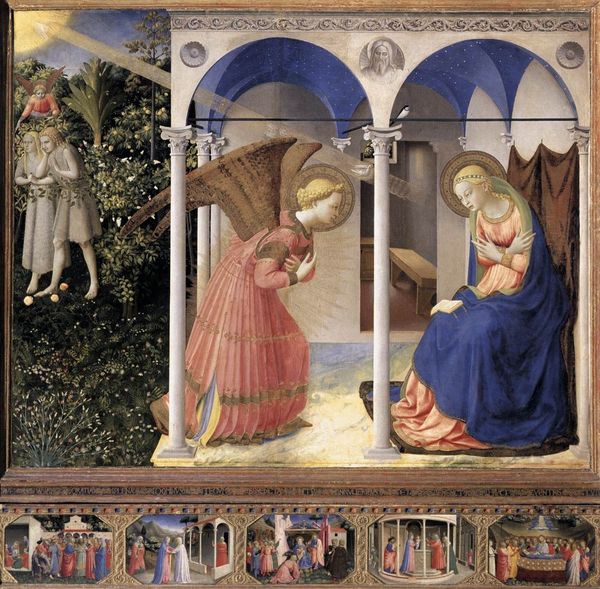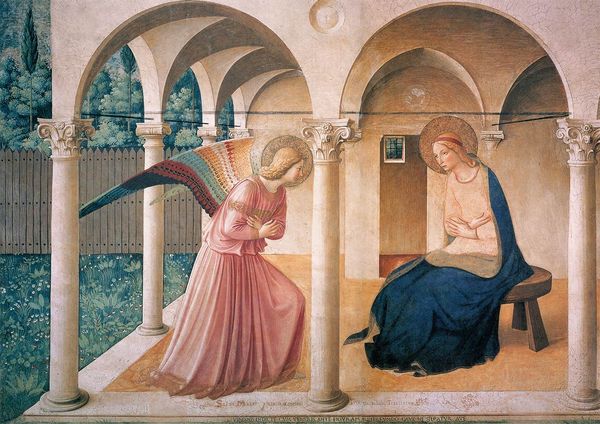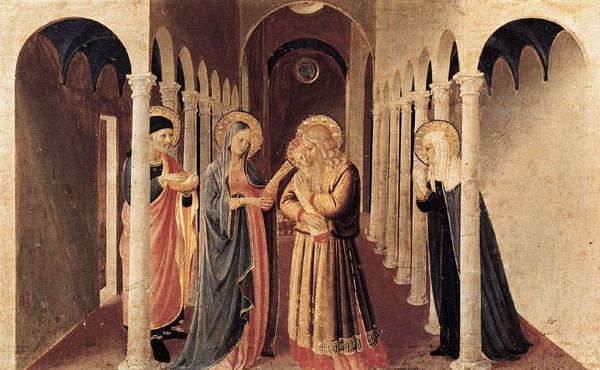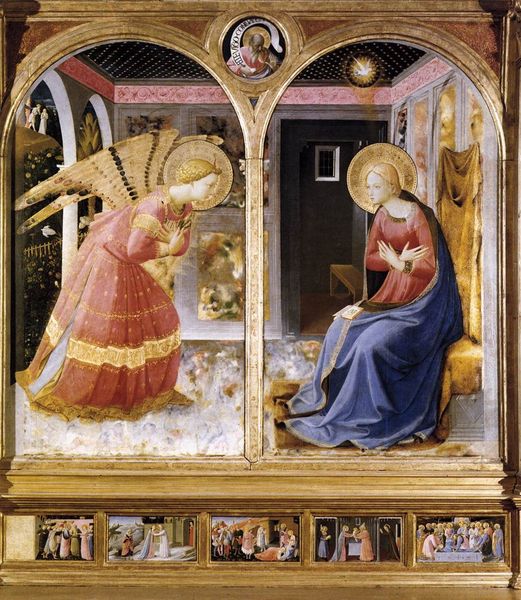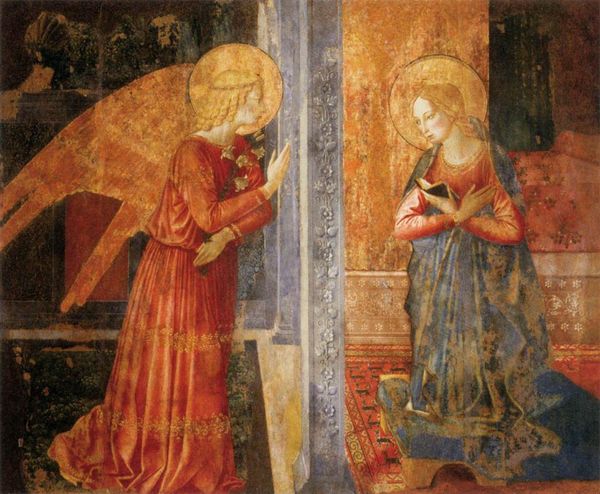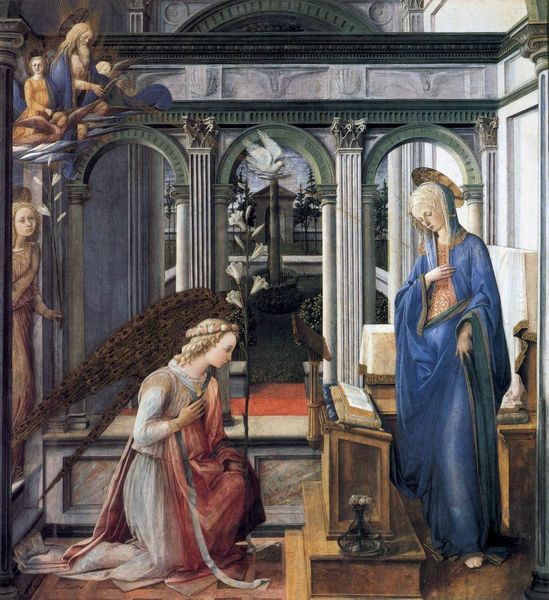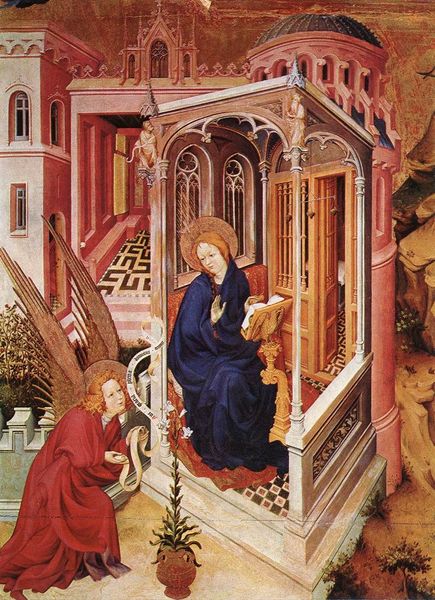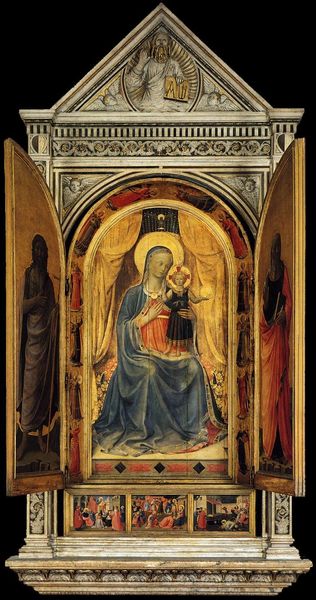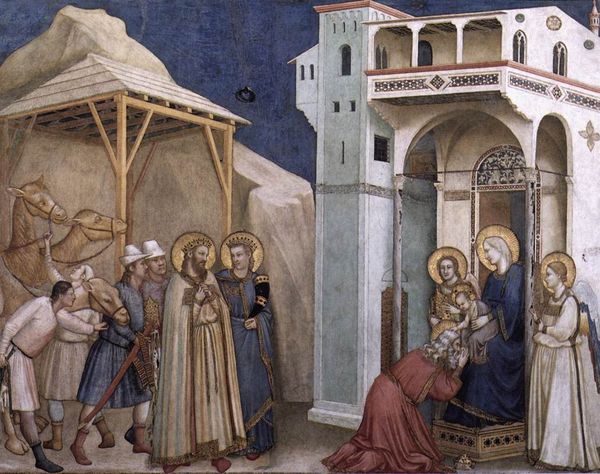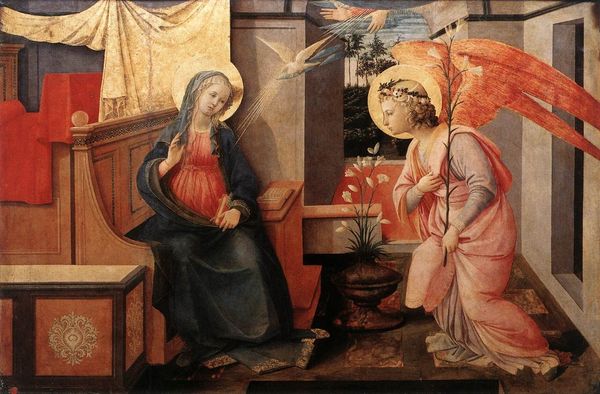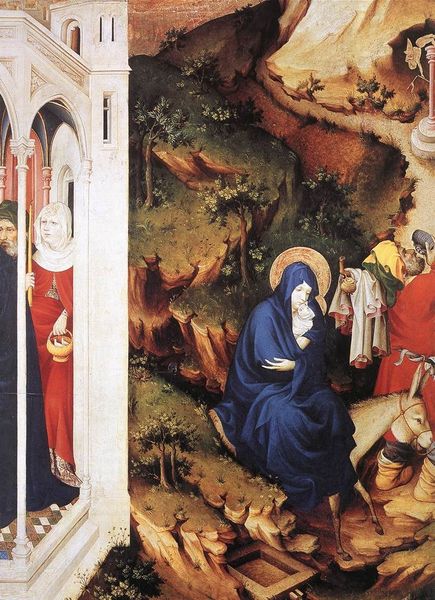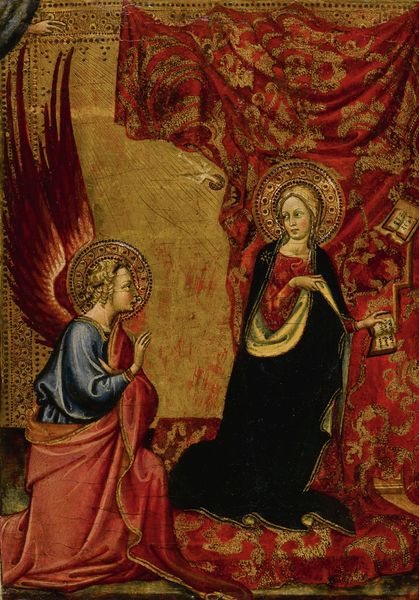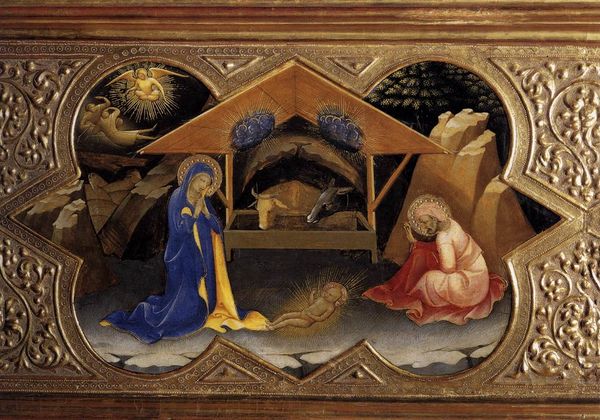
tempera, painting, fresco
#
narrative-art
#
tempera
#
painting
#
holy-places
#
fresco
#
oil painting
#
christianity
#
history-painting
#
italian-renaissance
#
early-renaissance
#
virgin-mary
#
angel
#
christ
Dimensions: 150 x 180 cm
Copyright: Public domain
Fra Angelico’s "Annunciation," now at the Diocesan Museum in Cortona, Italy, was made in the 15th century using tempera on wood. The smooth, luminous quality of the painting is due to this traditional medium. The process of egg tempera involves mixing pigments with egg yolk, resulting in colors that maintain their brilliance over time. Fra Angelico, trained as an illuminator, would have meticulously applied thin layers of paint. The detailed rendering of the angel’s wings, and the Virgin Mary’s robes, show this slow, painstaking application. Gold leaf adds a celestial dimension, reflecting light and invoking the divine nature of the scene. The underdrawing, choice of pigments, and the application of gold leaf, all required specialized knowledge and skill, acquired through years of apprenticeship and practice. This kind of mastery should make us rethink traditional distinctions between art and craft, as the production of this masterpiece rested on the shoulders of skilled labour.
Comments
No comments
Be the first to comment and join the conversation on the ultimate creative platform.
